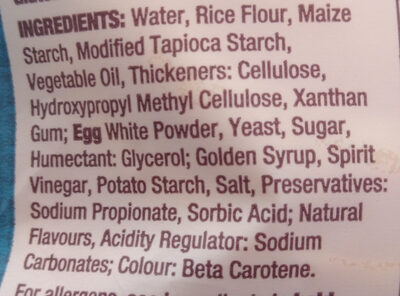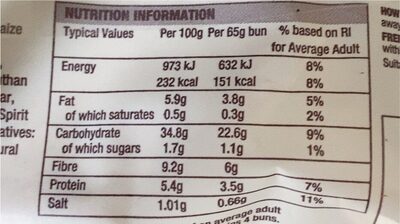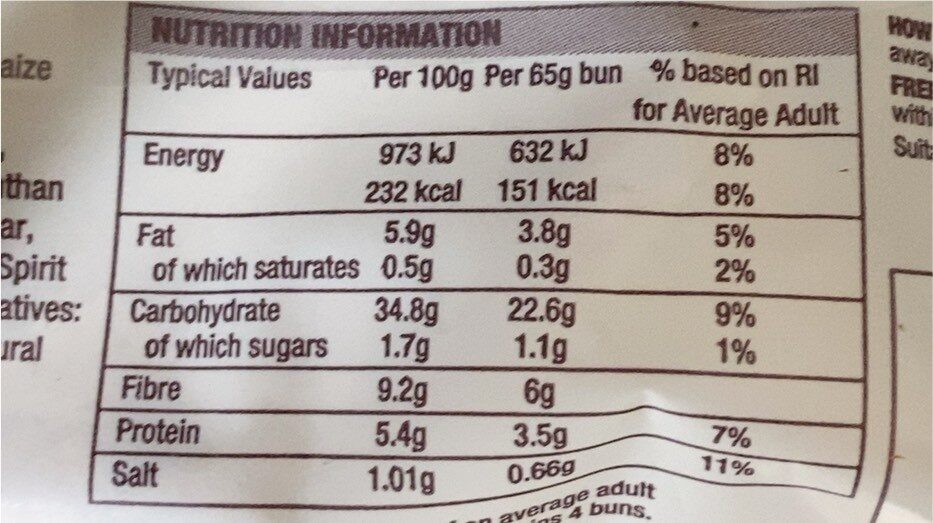Brioche Buns - Promise Gluten Free - 260g
This product page is not complete. You can help to complete it by editing it and adding more data from the photos we have, or by taking more photos using the app for Android or iPhone/iPad. Thank you!
×
Barcode: 5391526416594 (EAN / EAN-13)
Quantity: 260g
Packaging: en:Plastic
Brandaí: Promise Gluten Free
Catagóirí: en:Plant-based foods and beverages, en:Plant-based foods, en:Cereals and potatoes, en:Breads, en:Buns
Labels, certifications, awards: en:No gluten
Manufacturing or processing places: Promise Gluten Free Bakery, Ardara, Co. Donegal, Ireland
Siopaí: Tesco
Country: Poblacht na hÉireann
Matching with your preferences
Environment
Packaging
Transportation
Report a problem
Data sources
Product added on ag kiliweb
Last edit of product page on ag inf.
Product page also edited by openfoodfacts-contributors, roboto-app, roccait, yuka.sY2b0xO6T85zoF3NwEKvlkofb9XGqS71BkHvs27Q59uBKJzyevVK36f5A6s, yuka.sY2b0xO6T85zoF3NwEKvlkx3aPP7oQzZDgXimE-p_t2rdrLGP4BxwbrkI6s, yuka.sY2b0xO6T85zoF3NwEKvlnBgXsP3uzCbCjb4gk6Wl_aTHLvDZutyxprraKs.










